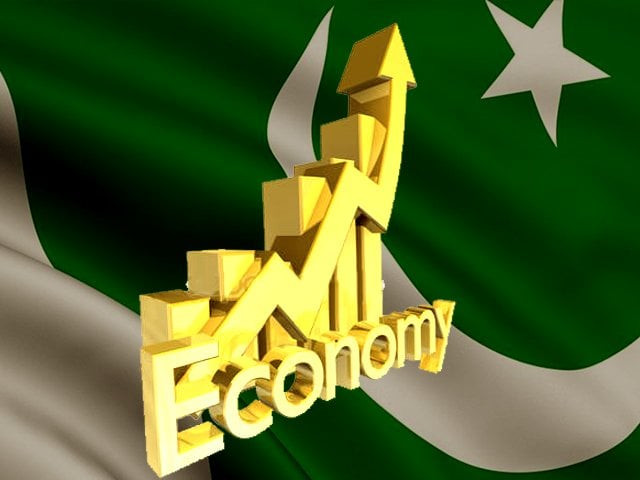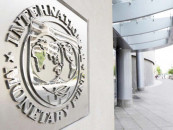Is the economy improving enough?
Stabilising indicators offer hope, but tangible benefits must reach the masses

Pakistan's economy has been on a tumultuous roller-coaster ride for the past several years. It oscillates between boom-and-bust cycles, which is not inherently a problem. The real issue is that the length of these cycles has been reduced to precariously short intervals, causing issues more frequently. However, the economy is now showing unmistakable signs of improvement. Let's examine these improvements and appreciate another opportunity providence has given us to correct our course.
The debt-to-GDP ratio is a widely accepted measure of overall macroeconomic performance. It shows the indebtedness of an economy relative to its productive potential. Pakistan's debt-to-GDP ratio has improved to 70% in FY24, a six-year low. To put things in perspective, the debt-to-GDP ratio of the US is around 120%, the UK is 100%, and India is 82%. So, 70% is not bad at all. Furthermore, if we account for the size of the undocumented economy, Pakistan's actual situation is even more praiseworthy.
Similarly, the external debt-to-GDP ratio has declined to 26% in FY24 from 32% in FY23. Moreover, the external debt-to-export ratio, which indicates the repayment capacity of external debt, has improved from 314% in FY20 to 253% in FY24. Supporting this ongoing improvement, the external debt servicing-to-reserve ratio is expected to decline to 89% in FY25.
Despite the negative hue and cry, it must be acknowledged that textile exports have shown noticeable recovery, while Information Technology (IT) exports are increasing at a promising rate. Additionally, a 40% rise in remittances has been critical to improving the overall external account of the country.
Stability in the external sector seems evident. Furthermore, a decline in oil prices is another boon, as it is expected to reduce the import bill by $3-3.5 billion this year.
The USD-PKR exchange rate has also remained largely stable over the past year, and this stability has reflected in improving Pakistan's external bond market. The yield of Pakistan's Sukuk bond maturing in April 2026 has declined by almost 11% in the last year, marking a remarkable recovery.
Inflation, another major economic metric, has also seen improvement. It is the most painful pinch felt by the lower echelons of society. The Consumer Price Index (CPI) has declined considerably from 38% since May 2023 and is expected to reach 7.5% by September 2024. Moreover, this declining trajectory is projected to continue until at least March 2025.
The fiscal deficit-to-GDP ratio has also improved to 6.8%, with further improvement expected next year as the government's interest expenses are set to decline sharply due to lower interest rates. Additionally, some resolution of the Independent Power Producers (IPP) situation is on the cards.
All in all, the economic situation appears to be much better than it was last year. Fears of domestic and foreign debt restructuring have receded. Even with low reserves last year, economic managers did a commendable job. There was no rationing or queuing. People didn't flock to petrol stations in fear of fuel shortages. There was never any shortage of medicine or essential supplies, and the country continued to function normally under stressful circumstances.
What we need now is to bring the fruits of this labour to the masses, particularly those under duress. It is evident that the government will accumulate a sizeable surplus due to declining interest costs. Hence, we need a properly functioning local government infrastructure to ensure these funds reach the grassroots level, enabling long-overdue road repairs and fixing infrastructure that has deteriorated over the past several years. Without this, the improvements may not lead to tangible relief.
There must be a realisation that we need to increase the disposable income of the middle class, who do the majority of the spending. This will create genuine demand to drive the economy forward.
Similarly, even small improvements in infrastructure would encourage talented individuals to stay in the country. Currently, talent is leaving Pakistan, even though prospects in destinations like Canada, the UK, and Europe are not particularly promising, given the looming global recession. However, people often justify their decision to leave due to the improved infrastructure and better lifestyle abroad. Enhanced infrastructure and brighter prospects here would compel talent to stay in Pakistan, which is critical for our future growth.
Without these improvements, these promising ratios would only remind us of a famous quote from Mark Twain, "There are three kinds of lies: lies, damned lies, and statistics."
THE WriteR IS A BANKER AND TEACHES ECONOMICS



















COMMENTS
Comments are moderated and generally will be posted if they are on-topic and not abusive.
For more information, please see our Comments FAQ